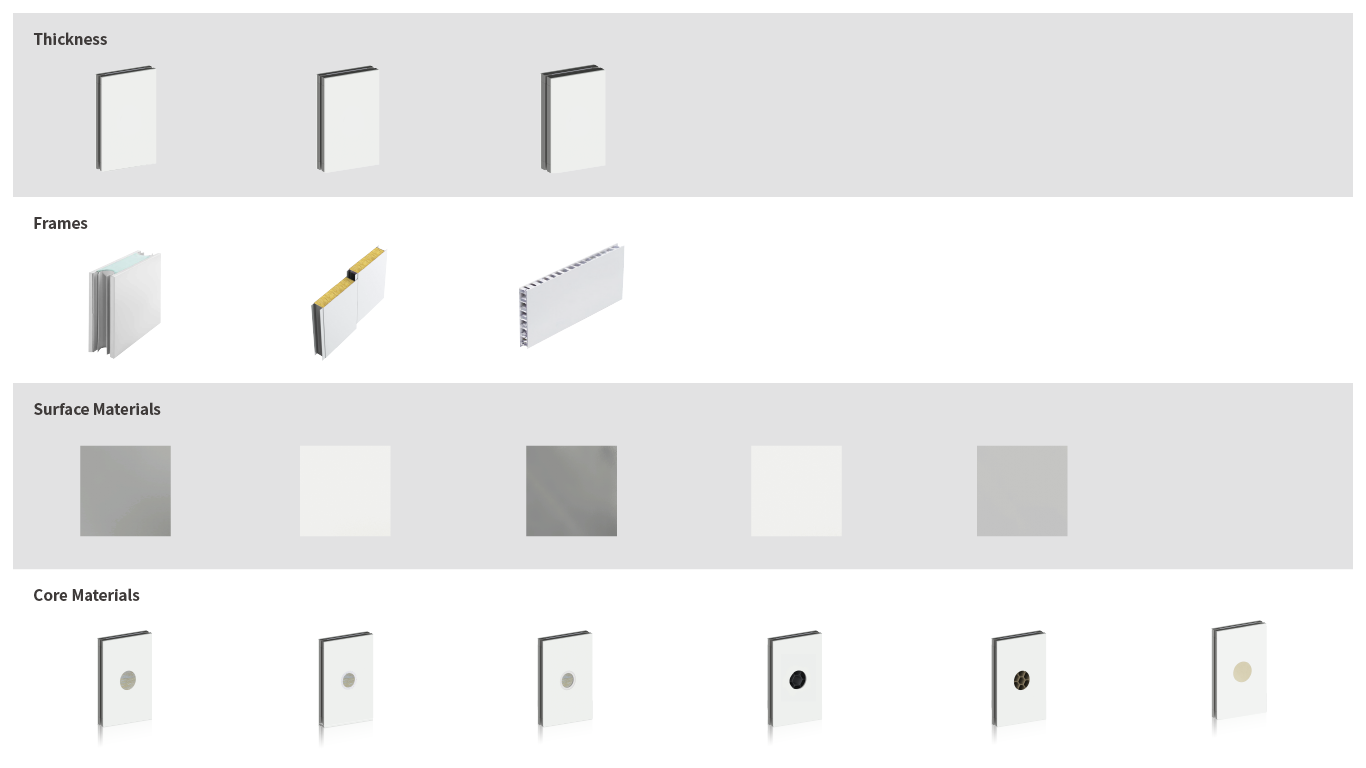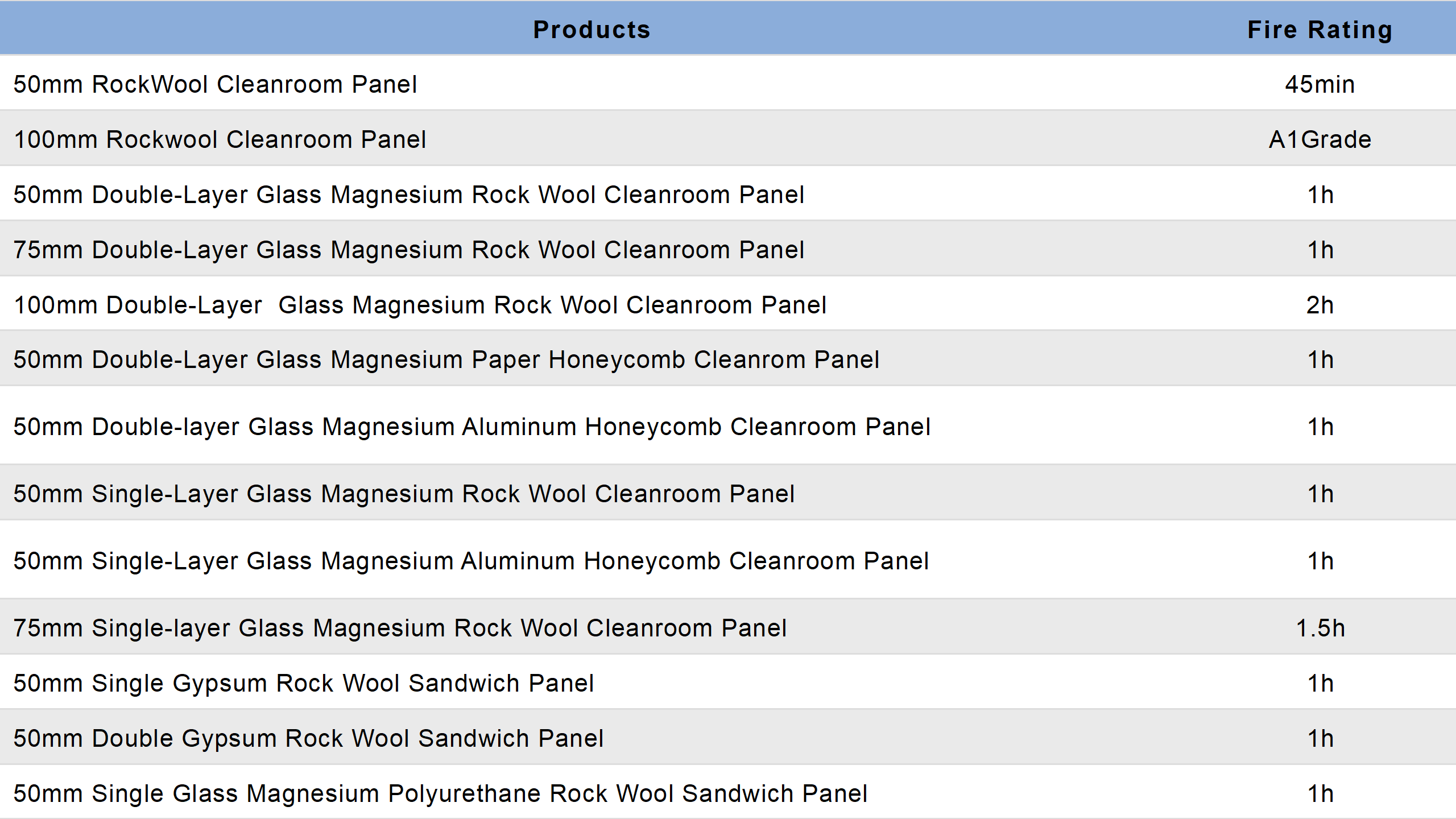We have a passion for unconventional solutions that bring your vision to life.
When it comes to Cleanroom construction in pharmaceutical, semiconductor, food, and daily chemicals, etc, we often face a multitude of choices and find it challenging to make the right decisions regarding Cleanroom panel selection. Cleanroom panels come in various specifications, including panel thickness, surface material, core material, and installation methods. For instance, Wiskind Cleanroom panels can be categorized as follows: Thickness, frames, industries, surface materials, and core materials.

While Cleanroom design requirements may specify certain parameters, they do not necessarily dictate a single solution. Incorrect Cleanroom panel configuration can not only lead to unsightly appearance of the wall, but also may cause some production safety concerns. Different Cleanroom panel configurations also vary significantly in price, and some customers often make cost-saving choices that outweigh the gains.
Prioritizing Cleanroom Panel Configuration
In general, the following prioritization can be applied to determine Cleanroom panel configuration:
1.Compliance with Fire Safety Regulations
In regions with well-established regulations, there are mandatory standards for wall and ceiling panels. The most common requirements relate to fire performance and fire resistance ratings. Fire performance influences the selection of Cleanroom panel core materials, and rockwool is commonly used in most Cleanroom panels. Fire resistance rating, on the other hand, is largely determined by panel thickness and core material composition. For example, Wiskind Cleanroom panels can achieve a fire resistance rating of up to 4 hours using different core material and thickness combinations.

2. Meeting Production and Operational Requirements
If the only requirement is Cleanroom classifications, then common Cleanroom panels are usually sufficient. However, many Cleanrooms have specific controlled environment requirements. For instance, in Semiconductor Fab plant, Cleanroom wall panels need to have anti-static properties.
In addition to the controlled environment during production, the entire operation and maintenance process must also be considered. For example, in the Class-B area of a pharmaceutical cleanroom that has a long-term demand for VHP disinfection, the paint surface of conventional cleanroom panels cannot meet the requirements. Wiskind's Endure® cleanroom panels are specifically designed to withstand VHP disinfection and corrosion.
3. Satisfying Load-Bearing Requirements
For Cleanroom wall panels, a 0.5mm galvanized steel panel is typically sufficient to ensure a flat surface after installation. Under normal circumstances, 3-4 meter high wall panels will not deform due to their own weight. For extra-long panels, increasing the thickness of the edge stud material, adding stiffeners, or adding core material are common methods to enhance the panel's load-bearing capacity. These methods are also frequently used for Cleanroom ceiling panels to increase flexural load capacity and meet the requirements for personnel access for maintenance.
Cleanroom engineering is a complex system engineering project. The selection of the most suitable cleanroom panel product requires comprehensive consideration of various factors for the cleanroom enclosure structure. As a global leader in the cleanroom panel industry, Wiskind has accumulated experience in numerous cleanroom engineering implementation projects. It continuously researches and applies innovative materials, improves product production processes, optimizes product structural design, and meets the differentiated needs of cleanrooms in different industries. In addition, Wiskind's advanced digital factory, leading management system, and sound service system are the core capabilities to safeguard customer interests.

Wiskind Cleanroom specializes in cleanroom enclosure system , ceiling system, cleanroom doors and windows and related product development, manufacturing, sales, consulting and services.